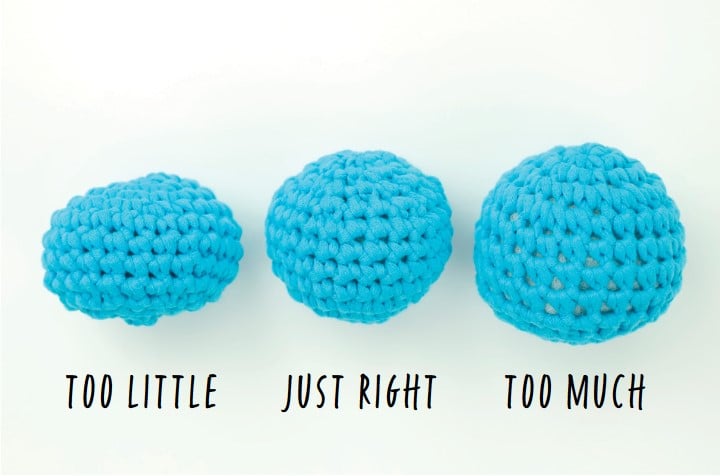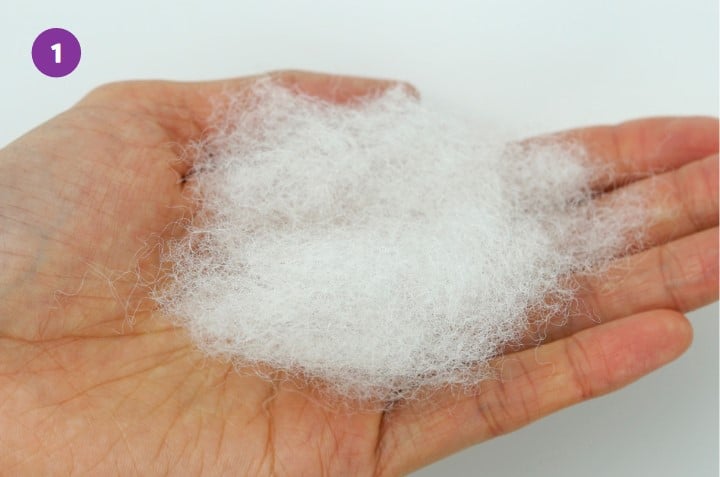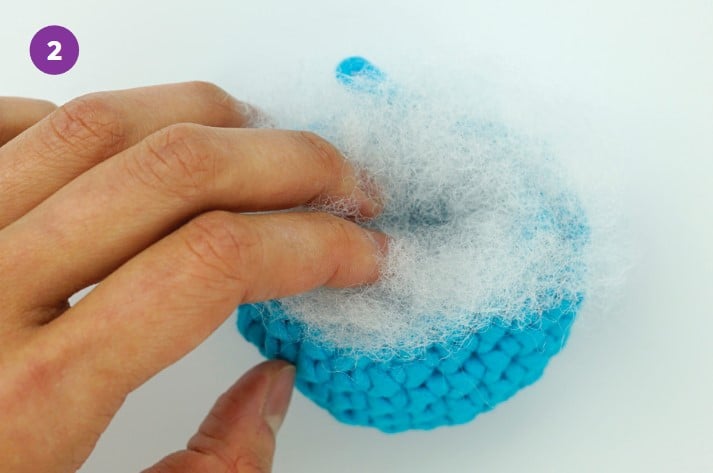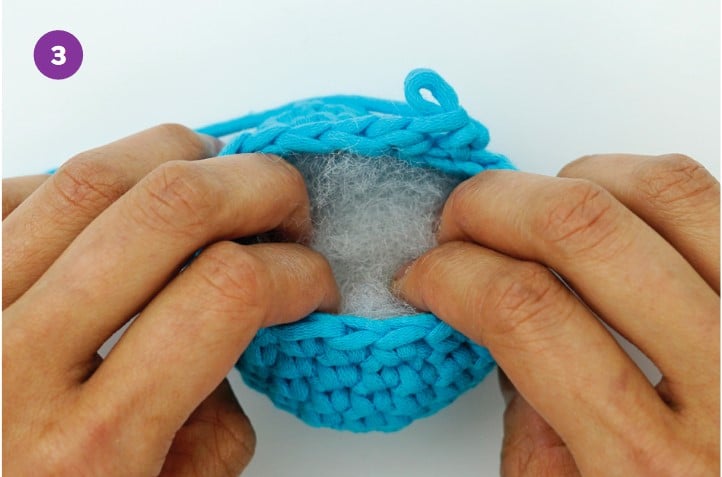How to stuff amigurumi
Amigurumi, crochet stuffed toys, are stuffed with polyfil. How you stuff an amigurumi greatly affects its final shape: lumpy or smooth, saggy or plump. If you don’t add enough, your amigurumi might sink in here or there. But if you add too much, you’ll be able to see the stuffing from the outside. It takes some time to learn how much stuffing is the right amount. Keep checking how it looks as you slowly add more stuffing in layers.
Watch the video below for two ways to stuff amigurumi, so that your piece stays smooth.
Here’s what the same pattern looks like when stuffed too little, just right, and too much, from left to right.
 |
Stuffing Amigurumi (step-by-step with photos)
 1. Pull apart a thin layer of stuffing. Shape it so that it’s about the same diameter as the bottom of the piece. 1. Pull apart a thin layer of stuffing. Shape it so that it’s about the same diameter as the bottom of the piece. |  2. Tuck this layer of stuffing into the piece. Push down on all angles, even on the edges, to make it as flat as possible. 2. Tuck this layer of stuffing into the piece. Push down on all angles, even on the edges, to make it as flat as possible. |  3. Repeat steps 1–2 until you’ve filled the whole piece, adjusting the diameter of the stuffing layer to match what you’re currently filling. 3. Repeat steps 1–2 until you’ve filled the whole piece, adjusting the diameter of the stuffing layer to match what you’re currently filling. |
TIP
Use a chopstick to get into nooks and crannies.
